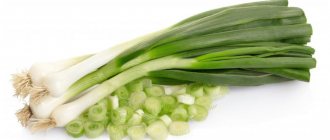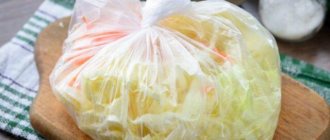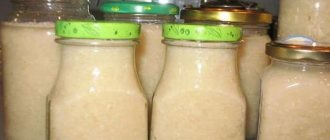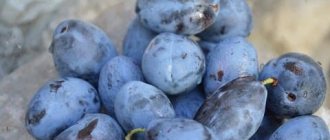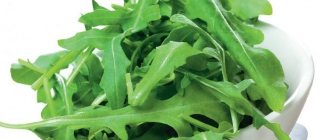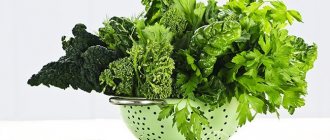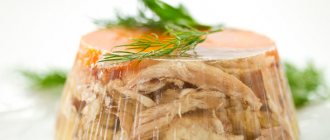Summer pleases with an abundance of fresh herbs, which are rich in nutrients and give dishes a special taste. Housewives often wonder whether it is possible to freeze green onions in the refrigerator for the winter in order to preserve their benefits and taste. This is not only possible, but also necessary to add a special touch of freshness and exquisite aroma to winter dishes. However, to preserve onions, it is important to follow some guidelines for freezing them. All useful tips and little tricks are presented in our article.
The best way to preserve green onions for the winter is to freeze them. This storage method will help preserve the taste, aroma and beneficial properties of the product.
Is it possible to freeze green onions?
Green onions, like any greens, can be safely frozen . In winter, such a preparation will come in handy, because a bunch of green feathers on the market costs much more than in summer, and brings practically no benefit.
Points for and against
Not all housewives prepare green onions by freezing.
There are arguments against this method:
- After prolonged exposure to sub-zero temperatures, greens lose their taste and vitamins. However, if you follow the basic principles of freezing, nothing like this will happen.
- Not everyone knows how healthy this vegetable is and what dishes to add it to.
- After defrosting, the feathers lose their elasticity and stick together. This occurs exclusively when freezing rules are not followed or defrosting is improper.
There are many more arguments in favor of this method:
- The preparation process is completely simple and accessible to everyone.
- Frozen green onions keep better than dried or pickled ones.
- Ready-made chopped greens greatly simplify and speed up the cooking process.
- You don’t have to buy green onions at the market, which means you save money and time.
- The vegetable contains many vitamins and phytoncides, which will improve health and boost immunity in the winter.
Loss of beneficial properties
The common belief that greens lose vitamins and other beneficial components after freezing is refuted by science . In fact, vitamins are destroyed not by freezing, but by exposure to light, air (oxidation), and high temperatures. Freezing, on the contrary, is considered the most optimal harvesting method for preserving the maximum amount of useful substances.
Taste and consistency after defrosting
If the technology is followed, the taste of green onions remains unchanged . It only deteriorates when stored for too long and re-frozen after defrosting.
The consistency of onion feathers changes slightly - they become somewhat softer than fresh ones . This depends on the freezing method and storage conditions. If you follow the recommendations and tips for properly freezing greens, their consistency will remain virtually unchanged.
Interesting things on the site:
How to salt green onions for the winter quickly and easily
How to dry green onions for the winter
How to properly freeze leeks
Compound
Is it possible to freeze green onions? Of course you can. Moreover, such processing does not affect the properties of the product in any way. After defrosting, all the same vitamins remain in it as before freezing:
- B vitamins, which are extremely beneficial for the nervous system and brain activity. In particular, vitamin B1 controls the acidity of the human body and helps normalize cholesterol levels, and vitamin B5 improves the metabolism of proteins, fats and carbohydrates.
- Vitamin A is an active participant in redox processes. It is also necessary to stimulate the growth of new cells and metabolism.
- Vitamin C takes part in all processes occurring in the body.
- Vitamin E is a strong antioxidant that has a beneficial effect on human reproductive function. This element also improves the condition of skin, hair and nails.
Features of freezing
To get the most benefits and preserve the taste of green onions, consider some simple but important tips :
- Before you start chopping your greens, rinse them well with running water . Chopped onions should not be washed - this will lead to loss of taste and aroma.
- The white part of the onion can also be frozen , but it is better to do this in a separate container. Cut off the white “legs” from the greens only after washing, so that water does not get on the cut, otherwise the feathers will stick together.
- Be sure to drain the washed greens in a colander and dry with napkins or paper towels. Feathers must be completely dry. Then they will tolerate freezing well and will not stick together.
- It is better to pack greens in portions so as not to take them out of the freezer many times. Otherwise, green onions will quickly lose their taste and beneficial properties.
Choose elastic feathers of a rich green color . Remove all withered, limp and dry ones.
Sprouted greens
If you don't want to freeze your greens, try growing them. Fill a small jar with water and place the onion there. Immerse it in water up to half or a little higher, but do not “drown”. Place the jar on a sunny windowsill. Within a week you can sprinkle your sandwiches with aromatic herbs.
For sprouting, choose homemade onions that are firm and juicy. Stores often trim the ends of the bulbs to prevent roots from growing. It is impossible to germinate such a product.
Don't expect much. Winter greens grown on windowsills are pale and watery. It is inferior in both taste and aroma to juicy summer feathers. There are also fewer vitamins in sprouted onions - they simply have nowhere to come from. Summer onions grow in the garden, with fertile soil and unlimited sunlight at their disposal. It is impossible to create the same conditions on the windowsill, no matter how hard you try. Even frozen summer greens are healthier than sprouted ones.
Freezing methods
There are many ways to prepare green onions in the freezer . We have collected the most accessible and interesting of them.
In various containers
There are several options for preparing green onions in different containers:
- The easiest and fastest way is to freeze the greens in a bag. To do this, it is cut into rings and packaged in portions into small bags. Before tying the bag, be sure to run your hand over it and release excess air. Some housewives use zip bags and a regular juice straw. The bag is not closed all the way, a tube is inserted near the edge, the air is released, the tube is quickly removed and the bag is zipped completely.
- Freezing in a container is one of the most common methods. Finely chopped greens are laid out in a thin layer on cutting boards or trays and placed in the freezer for several hours. To prevent onion rings from sticking to the surface of the trays, they are covered with cling film. After the greens have dried in the freezer, they are scattered into containers.
- There is another interesting way of freezing - in a bottle . To do this, the greens must also be well dried, otherwise it will be impossible to get them. It is better to use small bottles – no more than 1 liter in volume.
- Housewives also practice portion freezing in ice trays for cupcakes and muffins. The greens are prepared as for freezing in a container and laid out in containers.
In various forms
Onions can be stored either chopped or whole.
The following freezing options are available::
- In crushed form . It is either simply scattered into bags or containers, or added to molds of water and cubes of greens are prepared with ice.
- A very original way for gourmets is freezing in butter. It must lie at room temperature for one hour. Use oil with a high fat content, preferably homemade. Chopped herbs and spices are added to it to taste. Then the mixture is laid out in molds or wrapped in cling film into a sausage. When the cubes are frozen, they are transferred to bags. Another option is to roll out the mixture in a bag into a thin layer and break off pieces when cooking.
- To keep them intact, feathers are wrapped in foil or cling film. This method is suitable for those who cannot spend time on chopping, but want to prepare green onions for the winter. You just have to take into account that after defrosting at room temperature, the feathers lose their appearance and become soft.
- Another harvesting method is blanching greens . Place it in a colander and lower it into boiling water for one minute. After this, the onions are cooled and all the liquid is filtered out. Blanched greens are placed in plastic containers and placed in the freezer.
Useful tips
How to make the cook’s job easier when freezing onions:
- To avoid tears when preparing sliced onions for freezing, it is advisable to cool the vegetable for 30 minutes before slicing. Peeling begins from the neck of the onion, without cutting off the root, but leaving it entirely. The root system will keep the onion from breaking into slices when chopping by hand. Sulfur compounds in onions, which are released when cells are destroyed (cutting), are concentrated in the area of the bottom of the onion, at the roots.
- You can also carry out all the work on chopping the caustic vegetable in the open air, so that the onion vapors overloaded with sulfur are neutralized by fresh air.
- Some chefs claim that a lit candle placed next to an onion board, the flame of which absorbs sulfur fumes, helps them avoid tears. There is no need to throw away the bottoms of already cut onions. At the end of the work, the roots are cut off and the remaining pulp is used to prepare a flavorful dish.
- Regardless of how the onions are frozen, they must be stored in an airtight container to prevent onion smell from appearing in the freezer. When packing cuttings into containers with lids, you should leave a couple of centimeters of free space. Layers of frozen vegetables in zip-up bags are placed in one or more thick plastic bags for long-term storage in the freezer. This technique will help avoid the appearance of a pervasive onion smell.
Any of the above methods is suitable for freezing onions
Freezing vegetables for future use will help an experienced housewife preserve the harvest and reduce cooking time, which is important for working women
Shelf life
Frozen greens can be stored for 2 months to six months. However, it is important to take into account the nuances on which the preservation time of the beneficial properties of the vegetable depends.
A few recommendations:
- Shelf life depends on the freezing method and freezer temperature . The lower it is, the longer you can keep the greens. If the freezer maintains a temperature of -18°C, long-term storage of greens is allowed for six months or even more.
- The optimal shelf life of green onions is 3 months . This is how long it contains the maximum amount of useful substances.
- Green onions with oil spoil faster , so it is better to use them within 1-2 months. Such cubes cannot be re-frozen; in case of forced defrosting (the power went out, the refrigerator broke), they are immediately used in dishes.
At first, onions will emit a strong odor in the freezer , so wrap them in cling film and put them on a separate shelf so that the aroma does not transfer to other products.
Preparing the refrigerator before starting the process
Before freezing a product in freezers, you must empty one of the drawers of unnecessary products, wash and dry it.
Place the bags or container of onions tightly in a well-dried box. If the refrigerator has a “Quick Freeze” function, set it for two hours. Freezing will go faster and the vitamins will be better preserved. If the refrigerator does not have such a function, then the product is frozen at -10 - 15 degrees. This is the optimal temperature.
How to defrost correctly
Green onions do not need to be defrosted in all cases . To prepare hot dishes, casseroles and pies, you do not need to defrost the greens. This is only necessary for whole feathers or adding chopped herbs to cold dishes.
It is recommended to defrost at room temperature or in the refrigerator . In the first case, it will be faster, but the consistency of the greens will become softer and more slippery. Defrosting will not affect the taste and aroma. In the refrigerator, the greens will retain their elasticity; this method is ideal for whole onions.
Do not use a microwave or hot water for defrosting . So the greens will not only lose their taste, but will also become completely sour.
Results
The opinion that onions cannot be frozen is erroneous. The chopped vegetable, like its greens, tolerates low temperatures well and retains its beneficial properties for six months. There are many ways to quickly and easily prepare onions for freezing; the most difficult thing is to choose the best one.
It is not recommended to store onions in the refrigerator; there the vegetable will quickly deteriorate due to non-compliance with the basic requirements for humidity conditions, therefore, if there is no alternative place for storage, you should not purchase the product in large quantities. If a large harvest is harvested, some can be peeled and frozen, and the rest can be sent to the balcony or placed in the cellar.
Onions keep well in the freezer, but the main problem is that they change their structure after storage. After defrosting, it cannot be added to salads, but can only be used for preparing hot dishes and snacks. This is a significant drawback that the frozen product has.
Video: How to freeze Green Onions for the Winter, an easy way.
Do you want to understand better than others?
- How to freeze and store cilantro in the refrigerator for the winter - Storing cilantro as a preparation for the winter is a good alternative to consuming this spice fresh. Even when cilantro is in the freezer or canned, it actually...
- How to properly freeze gooseberries for the winter - Gooseberries are a delicious summer berry with a huge amount of valuable microelements and a short shelf life. To preserve the beneficial properties of fruits, housewives recommend freezing them in…
- How to freeze peaches for the winter: 8 best ways – Freezing will help you preserve a delicious piece of summer. Find out how to choose the right fruits for vitamin preparations, whether they can be stored in the refrigerator, what ways there are to...
- Fruits and vegetables to freeze for the winter in the freezer – You can freeze various foods in the freezer. This storage method extends their shelf life, allowing you to save money on the purchase of fresh food products...
- What foods can be frozen in the freezer for the winter - Freezing compartments of household refrigerators or free-standing devices with sub-zero temperatures allow you to preserve many seasonal fruits, berries and vegetables for the winter. Freezing...
Where to apply
Fragrant green onions are suitable for preparing first and second courses, casseroles, meatballs, omelettes, savory pies and pancakes, and sauces.
Depending on the freezing method, green onions are added as a dressing to many dishes.:
- cubes with water for hot first courses.
- Greens with butter go well with potatoes, meat and fish, and go well with sandwiches.
- Chopped greens from bags and containers are added to main courses, casseroles, pancakes, pancakes, and pies.
- Blanched onions are good in soups and main courses.
- For salads, it is better to use carefully thawed feathers .
Fragrance oil
Some housewives prepare fragrant butter for the winter, mixing it with herbs and spices in advance.
You will need:
- butter – soft, plastic, but not melted;
- green onions;
- any aromatic herbs to taste;
- spices - also to taste;
- a little salt.
Mix onions, herbs and oil, add spices and add a little salt so that the seasoning is not bland. Pack the product into bags or forms for freezing. If you are using ramekins, then remove the butter cubes and place in a vacuum sealed container.
We recommend: The main advantages of storing seasonal items in boxes and rules for implementing the idea
The preparation can be added to soups and side dishes instead of regular oil. It’s very tasty to put pieces of this frozen food into cutlets or meat rolls - the dish turns out unusually juicy and aromatic.
Reviews
Many housewives who have tested the method of freezing green onions from their own experience were satisfied with the result. Here are some reviews on this topic.
Anastasia, Moscow : “I liked the method. Last year I froze a lot of these preparations, the onions tasted like fresh ones. I added a little to soups and egg pies.”
Valentina, Kazan : “I froze the greens in cubes with water and butter. What you need for potatoes is butter and onions at once. Thanks to water, the taste and aroma are perfectly preserved. I prepare all the excess greens this way.”
Lyudmila, St. Petersburg : “I have been using frozen onions in winter for soups and pies for a long time. I love greens both dried and frozen. The taste is preserved well. The family loves it!”
Video
To get more information about preparing onions for the winter for salads and pies, we suggest watching a video on the topic of the article:
About the author:
Found a mistake? Select the text with the mouse and click:
Ctrl + Enter
Do you know that:
Compost is rotted organic remains of various origins. How to do it? They put everything in a heap, hole or large box: kitchen scraps, tops of garden crops, weeds cut before flowering, thin twigs. All this is layered with phosphate rock, sometimes straw, earth or peat. (Some summer residents add special composting accelerators.) Cover with film. During the process of overheating, the pile is periodically turned or pierced to bring in fresh air. Typically, compost “ripens” for 2 years, but with modern additives it can be ready in one summer season.
Bulb
Many people also claim that after freezing, onions become “glassy,” watery, soft and tasteless.
All this takes place if the freezing process is approached incorrectly. In order for frozen onions not to lose their quality, they must be harvested in stages, adhering to some rules:
To prepare for the winter, choose only fresh onions, without a sharp putrid odor or surface stains. Peel the top layer (husk) of the onion. Cut the onion into slices, 0.5-1 cm thick. The chopped onion must be divided into portions and placed in bags, leaving a little free space in them (frozen onions increase in volume). Carefully squeeze out excess air from the bag and tie or zip it closed. Shake the bag to evenly distribute the cuttings in it. Place portions in the freezer.

